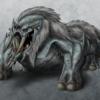+---+ +---+ +---+ +---+
| 1 | --> | 2 | --> | 3 | --> | 4 |
| | <-- | | <-- | | <-- | |
+---+ +---+ +---+ +---+
/\ /\ /\ /\
|| || || ||
\/ \/ \/ \/
+---+ +---+ +---+ +---+
| 5 | --> | 6 | --> | 7 | --> | 8 |
| | <-- | | <-- | | <-- | |
+---+ +---+ +---+ +---+
/\ /\ /\ /\
|| || || ||
\/ \/ \/ \/
+---+ +---+ +---+ +---+
| 9 | --> | 10| --> | 11| --> | 12|
| | <-- | | <-- | | <-- | |
+---+ +---+ +---+ +---+
How to communicate between computers?
Using Winsock UDP in Windows 2000?
Assume 12 computers arranged like this.
Thanks Zanthos for your quick reply!
Actually only one NIC in each computer.
[edited by - safe on February 23, 2004 6:32:59 PM]
Actually only one NIC in each computer.
[edited by - safe on February 23, 2004 6:32:59 PM]
ok I see it now 
UDP does not care about the topology of the network as such, so if your network hardware is configured properly and everything is cabled up, you should be able to create a client/server test application to send data between your computers.
The diagram is misleading, you would typically have 8 machines connected to one switch which is connected via the uplink port to another switch, of which has another 8 machines connected to it.
[[ Pancake Meat ]]
UDP does not care about the topology of the network as such, so if your network hardware is configured properly and everything is cabled up, you should be able to create a client/server test application to send data between your computers.
The diagram is misleading, you would typically have 8 machines connected to one switch which is connected via the uplink port to another switch, of which has another 8 machines connected to it.
[[ Pancake Meat ]]
Yes you are right, the original diagram is misleading.
This is the 12 parts that every part need one computer to compute,
arrows means that boundary values need to be sent between parts:
The 12 computers connected using switches,
another one computer used to display the computed results:
I have finished case like this:
For every two computers, right one served as a Server, the left one as Client.
But for the case above, (for example, part 6).
It seems complex to enumerate all possibilities.
Thank you again,Zanthos!
[edited by - safe on February 23, 2004 9:00:08 PM]
This is the 12 parts that every part need one computer to compute,
arrows means that boundary values need to be sent between parts:
+---+ +---+ +---+ +---+| 1 | --> | 2 | --> | 3 | --> | 4 || | <-- | | <-- | | <-- | |+---+ +---+ +---+ +---+ /\ /\ /\ /\ || || || || \/ \/ \/ \/+---+ +---+ +---+ +---+| 5 | --> | 6 | --> | 7 | --> | 8 || | <-- | | <-- | | <-- | |+---+ +---+ +---+ +---+ /\ /\ /\ /\ || || || || \/ \/ \/ \/+---+ +---+ +---+ +---+| 9 | --> | 10| --> | 11| --> | 12|| | <-- | | <-- | | <-- | |+---+ +---+ +---+ +---+ The 12 computers connected using switches,
another one computer used to display the computed results:
=+==========+===================+========+= | | | |+---+ +---+ +---+ +----+| 1 | | 2 | ... | 12| | D || | | | | | | |+---+ +---+ +---+ +----+ I have finished case like this:
+---+ +---+ +---+ +---+| 1 | --> | 2 | --> | 3 | --> | 4 || | <-- | | <-- | | <-- | |+---+ +---+ +---+ +---+ For every two computers, right one served as a Server, the left one as Client.
But for the case above, (for example, part 6).
It seems complex to enumerate all possibilities.
Thank you again,Zanthos!
[edited by - safe on February 23, 2004 9:00:08 PM]
Why does the arrangement of the computers matter? this bizarre grid system is just added compleity. From what I can see all the computers are interconnected to each other via your switch which will allow you to use simple UDP sockets to send data between them. As for terminal "D", what calculations are being performed of which the results are to be displayd?
[[ Pancake Meat ]]
[[ Pancake Meat ]]
On each computer, create a socket for every connection it will need to make. Then send the data through those sockets. Nothing more. Nothing less.
Intro Engine
Intro Engine
I mean I must setup so many Client/Server relations between this computers.
I cannot run this 12 computers simutaneously. They must run one by one.
The one runs first will be Server, others which will send data to it will be Client.
For "D", no calculation perfomred, it just gather data from the 12 parts, and display in the form of graphics, using Direct3D.
Have a nice day!
I cannot run this 12 computers simutaneously. They must run one by one.
The one runs first will be Server, others which will send data to it will be Client.
For "D", no calculation perfomred, it just gather data from the 12 parts, and display in the form of graphics, using Direct3D.
Have a nice day!
quote:
Original post by Zanthos
Why does the arrangement of the computers matter? this bizarre grid system is just added compleity. From what I can see all the computers are interconnected to each other via your switch which will allow you to use simple UDP sockets to send data between them. As for terminal "D", what calculations are being performed of which the results are to be displayd?
[[ Pancake Meat ]]
I must setup a running sequence. When two computers exchange data, one must be Server, another must be Client. The Server must run first, the program will stop when reached recvfrom() function until receive data from Client.
On the contrary, if the Client runs first, much data will be lost,because in the Client part, the program won''t stop when it meet recvfrom() function.
Thanks for your reply.
On the contrary, if the Client runs first, much data will be lost,because in the Client part, the program won''t stop when it meet recvfrom() function.
Thanks for your reply.
quote:
Original post by Deebo
On each computer, create a socket for every connection it will need to make. Then send the data through those sockets. Nothing more. Nothing less.
Intro Engine
This topic is closed to new replies.
Advertisement
Popular Topics
Advertisement
Recommended Tutorials
Advertisement





